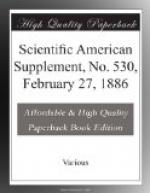[Footnote 8: Philocophus: or, THE DEAFE and Dumbe Mans Friend. By I.B. [John Bulwer] sirnamed the Chorosopher. London, 1648. Pp. 106,107.]
Dr. Alexander Graham Bell has modified the Dalgarno alphabet, and has made considerable use of it in its modified form as figured in the Annals, vol. xxviii., page 133. He esteems it highly for certain purposes, especially as employing touch to assist the sight or to release the sight for other employment, as in reading speech for instance. Here a touch-alphabet may be an efficient aid to the sight, as the touch may fairly keep pace with the rapidity of oral expression in deliberate speech. An objection of Dr. Kitto to the two-hand alphabet so widely know by school-children and others in Great Britain and in this country would seem to apply with greater force to the Dalgarno alphabet: “To hit the right digit on all occasions is by far the most difficult point to learn in the use of the [two-hand] manual alphabet, and it is hard to be sure which fingers have been touched."[9]
[Footnote 9: Dr. Kitto remaks the following common mistakes in reading rapid two-hand spelling: the confounding i with e or o; d with p; l with t; f with x; r with t and with one form of j; n with v, and adds: “Upon the whole, the system is very defective, and is capable of great improvement.” _—The Lost Senses_, p. 107.]
It is not the purpose of the writer to attempt even a catalogue of the numerous finger alphabets, common, tactile, phonetic, “phonomimic,” “phonodactylologic,” and syllabic, which have been proposed for the special use of the deaf.
The one-hand alphabet used by Ponce and figured by Bonet was common in Spanish almanacs hawked by ballad-mongers upon the streets of Madrid in the days of De l’Epee, and although rejected by him, it was adopted by his pupils. This with slight modifications became the French manual alphabet which was introduced at Hartford by Dr. Thomas Hopkins Gallaudet. This alphabet is known in almost every hamlet in the land. Slight changes in the form of certain letters, or in the position of the hand, in the direction of greater perspicuity and capacity for rapid use, have taken place gradually, though there is no absolute uniformity of usage among instructors or pupils.




